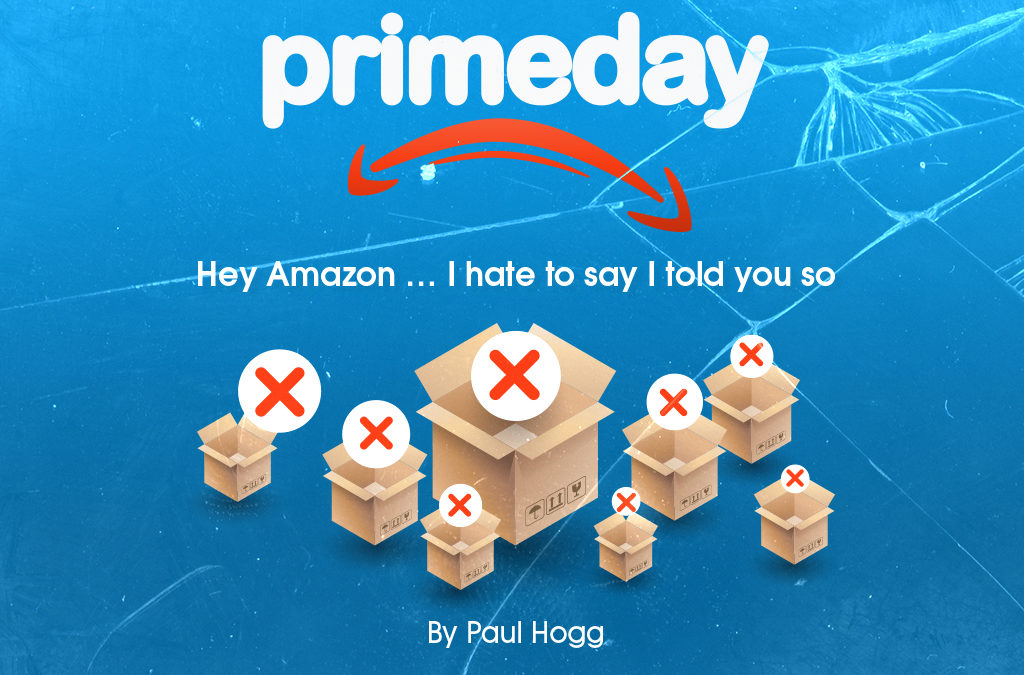Have you ever had one of those days when you wake up and suddenly feel validated? A day that represents a feeling of “I told you so,” one that in a terrible way warms your heart and makes you feel content? That’s how my day went as I witnessed the fail that should have been Amazon’s day in the sun—a day that ended in the dark.
Now, I don’t truly believe that anyone from Amazon reads my blogs—although my Mom will tell you different. Perhaps, in this case, Amazon needs to look outward to the world—not necessarily in the direction of Inteleca—but at the very least at the thought leaders in the world who have been predicting usage and data rises for years. Because if Amazon had actually considered the impact of what their biggest shopping day of the year truly represented, they may have been better prepared.
The challenge with Amazon is multifaceted. First, it’s the single biggest online retailer in North America—accounting for more than 40% of all online sales. That in itself is a feat that needs to be well guarded and maintained. After all, in the fight for brand relevance in the twenty-first century, the need to keep customers satisfied is paramount. As a friend of mine in the marketing world always told me, there are only two sides to brand: the message you market, and the unfortunate other side of actually living up to the message you market.
In the case of Amazon this week, living up to the message it markets fell sadly short. With its famous Prime Day starting at 3 p.m. EDT, it took a mere 90 minutes to start seeing the issues arise. And by 5:00 p.m. EDT, Amazon’s social media feed began acknowledging the issues including a tweet that read, “Some customers are having difficulty shopping and we are working to resolve this issue quickly.” The issues, though brief in IT terms and lasting just a few hours at the most, represented issues with everything from the company’s website, to login issues and checkout.
In the end, people got what they wanted, but left a little disheartened with the brand and the once perceived ease-of-use.
But that’s not where this story ends. Amazon itself has become a beacon and shining example of online / in-app commerce. Its platform and approach has set a standard and direction for the majority of e-commerce and omni-channel businesses that wish to address the ever-growing market.
In this instance, a frightening case was made that even the biggest of companies needs to prepare for the future, one that demands bandwidth and processing power in the data center that exceeds all expectations. In the case of Amazon, it reminds me of one of my favorite movie quotes from the film 300 with Gerard Butler, “Before this battle is over, even a God King can bleed.”
This is exactly what happened on Prime Day—the God King of e-commerce proved to the world that even it isn’t infallible. It’s this lesson that all data centers need to take to heart. No matter how big, no matter how well prepared for the future of data that they think they are, they simply aren’t as prepared as they should be.
Looking outside one’s own four walls and engaging partners who know how to prepare for the worst (meaning that sales and marketing is going horribly right) is crucial to success. Building infrastructure that can handle unprecedented traffic and demand means saving brand while making money—living up to the message that one markets.
So again, not to be smug, but hey Amazon … I’ve covered this. Should we do lunch sometime to discuss?



